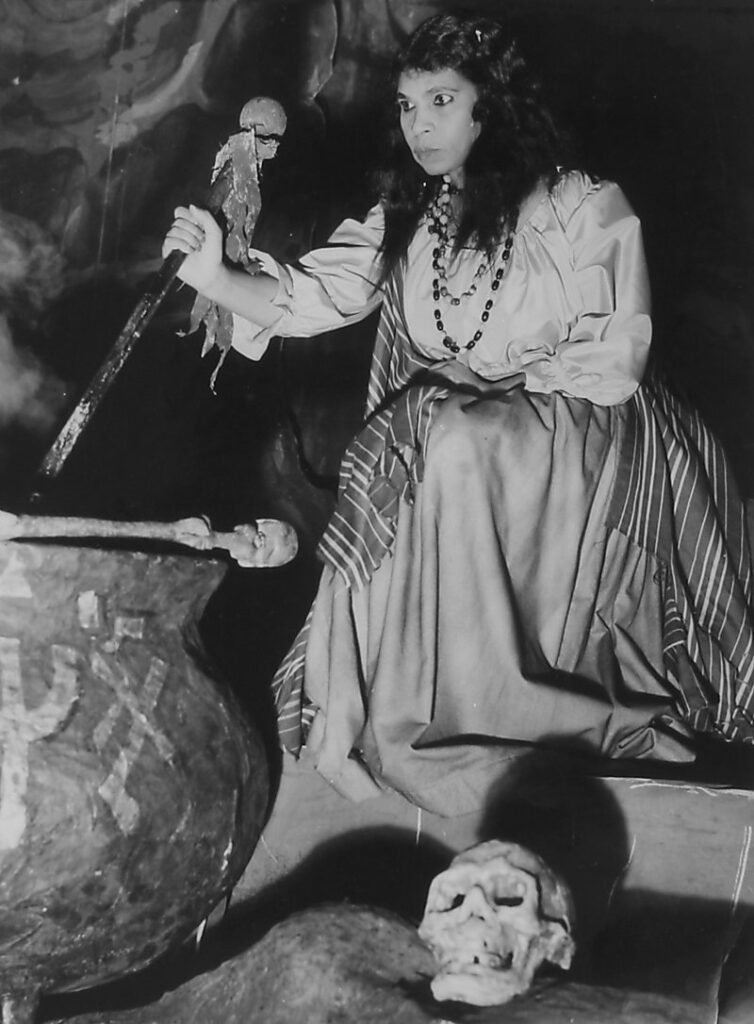Table of Contents
ToggleThen One Voice Sprang From The Fountain: The Marian Anderson Story

Marian Anderson's voice of freedom made history one note at a time
When you think of the Civil Rights movement in the United States, the first names that come to mind may be Martin Luther King, Jr., Rosa Parks, or Malcolm X. They, after all, were tireless leaders in a world of violence and racism. But before Rosa Parks didn’t get out of her seat, before the March on Washington, or the Freedom Riders, there were people fighting racism quietly. Marian Anderson was trying to sing, not trying to make a statement. But after the Daughters of the American Revolution held their segregated line, Marian Anderson’s voice bounced off the reflecting pool in Washington, D.C., and into the hearts of thousands.
Early Life
Marian Anderson was born in Philadelphia, PA, on February 27, 1897, to parents John and Anna. Her mom provided daycare, and her dad worked in the coal business. Like many singers of the time, Marian’s first exposure to music was in her family’s church. Marian was encouraged to sing and actually received a small sum for her performances throughout the community. Because her parents could not afford lessons, she taught herself to play the piano.
Marian’s life took a few turns as she reached her teens. Her father died when she was 12, forcing her to move. The African American community supported her financially so she could get vocal lessons and attend high school. Marian Anderson won a singing competition in the early 1920s, allowing her to perform with the New York Phil Harmonic. In 1924, she also became the first African American artist to sign with RCA recording company. Marian Anderson believed this may have opened her singing career, but racism prevented many opportunities.
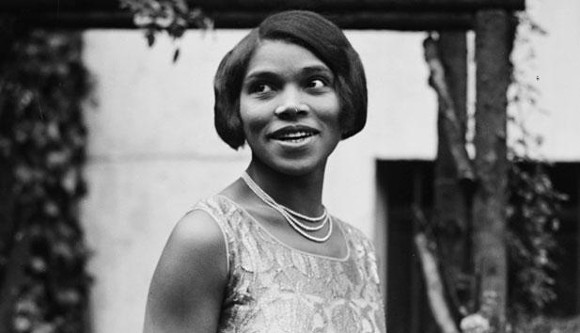
European Tour
Marian Anderson went to Europe to sing after failing to make headway in the United States. She had several successful tours in the 1930s. Marian sang for royalty in Sweden, Norway, and other Scandinavian countries. She even received scholarships to study abroad. While relatively unknown in the United States, she was beloved in Europe.
Coming (Back) to America
In the mid-1930s, Marian Anderson was offered a contract in the United States. She toured the U.S., but continued to be plagued by racism and segregation, something she had not faced in Europe. Marian Anderson performed many times a year in all parts of the U.S., but even in the north she faced discrimination. While performing at Princeton University, in New Jersey, she was denied a hotel room. Albert Einstein stepped in an offered to house her during her stay. The two became friends, and Marian stayed in his home multiple times. Their friendship is memorialized in a play called My Lord, What a Night.
The First Lady
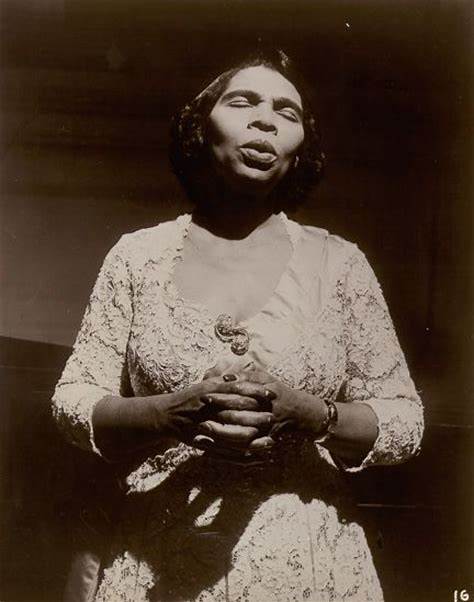
Marian Anderson and First Lady Eleanor Roosevelt became allies as they quietly fought racism. After the Daughters of the American Revolution would not allow Marian to perform to an integrated audience, First Lady Roosevelt resigned from her membership. Her resignation was supported by the NAACP, Brotherhood of Sleeping Car Porters, teachers, and more.
Roosevelt and her then-president husband, Franklin D. Roosevelt, arranged for Marian to sing in front of the Lincoln Memorial on Easter Sunday, 1939. The event drew a crowd of more than 75,000 people. It was no coincidence that she sang in front of the Lincoln Memorial, a beacon for African American freedom. Marian chose patriotic songs, such as My Country Tis of Thee, to show her citizenship as an American but also sang typical slave spirituals to demonstrate her citizenship as an African American in America.
.
A crowd of over 75,000, including FDR, First Lady Eleanor, and several prominent politicians, waited for hours to hear Marian Anderson sing in front of the Lincoln Memorial. She was the first to perform solo there.
When we went out onto the steps, my heart was throbbing to the point that I could scarcely hear anything. It seemed to me as far as the eye could go, there was a multitude such in your wildest imagination
Marian Anderson on her performance at the Lincoln Memorial
![By U.S. Information Agency - NARA image 306-NT-965B-4 / ARC 595378 (direct image URL [1]), Public Domain, https://commons.wikimedia.org/w/index.php?curid=2517831](https://historshe.com/wp-content/uploads/2025/01/MarianAndersonLincolnMemorial-150x150.png)
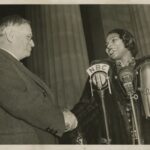

The Invitation
In the aftermath of Marian’s performance, pressure was put on the Daughters of the American Revolution. Four years after they had first denied her, they invited Marian to sing in September 1942.
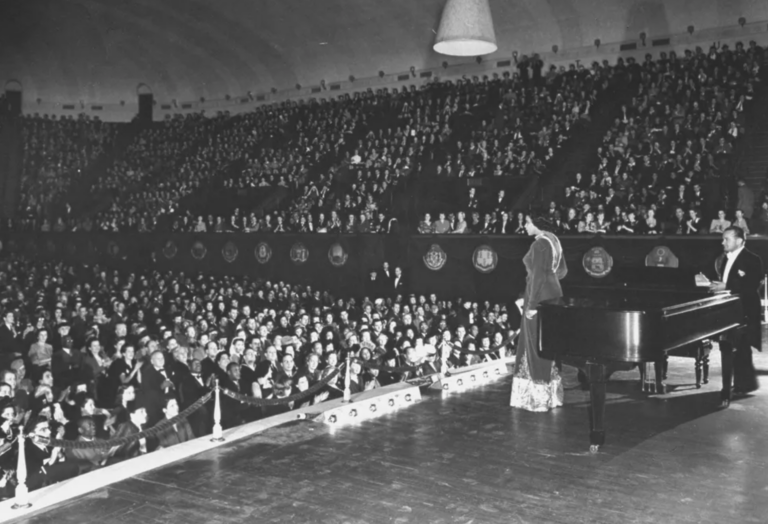
Martin Luther King, Jr. recalled hearing Marian Anderson singing at the Lincoln Memorial when he was 10 years old. Twenty-five years later, he would create his own history when he gave his “I Have A Dream” speech at the Lincoln Memorial, August 28, 1963.
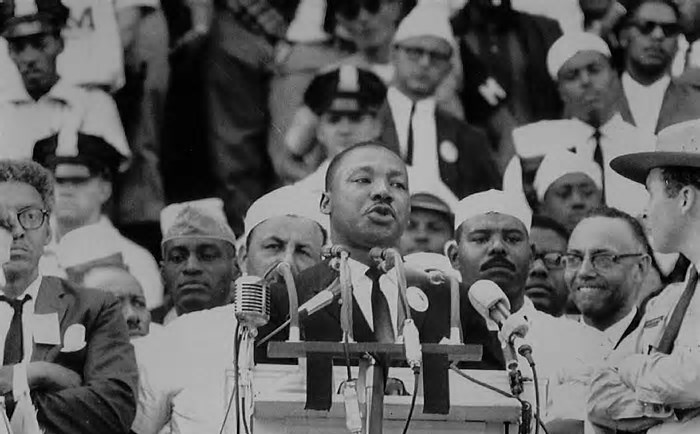
The First To Perform At The Met
Marian Anderson is usually remembered as the first African American to perform at the Metropolitan Opera on January 7, 1955. But her quiet soul, and voice of freedom brought the air of change leading up to the Civil Rights movement.
